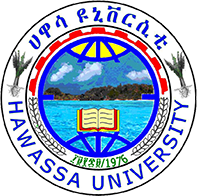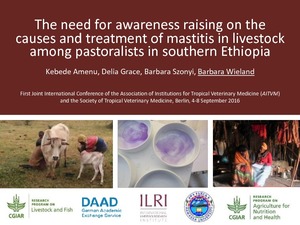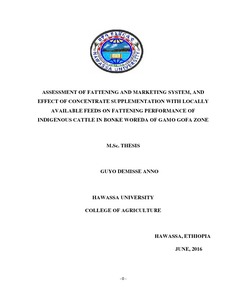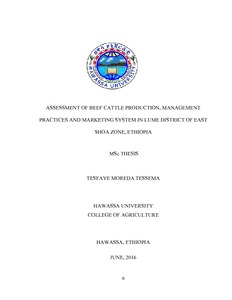Location
Hawassa university is a public university in Ethiopia.
Hawassa University (or HU) was established at Hawassa in April 2000. Since 1976 the colleges of HU had been operational starting with the College of Agriculture. The university was formed by merging three colleges in southern Ethiopia: Awassa College of Agriculture, Wondogenet College of Forestry and Dilla College of Teacher Education and Health Sciences.
Source: Wikipedia (consulted d.d. October 12th 2017)
Members:
Resources
Displaying 6 - 10 of 24The need for awareness raising on the causes and treatment of mastitis in livestock among pastoralists in southern Ethiopia
Ethiopia has high prevalence of clinical and subclinical mastitis in different livestock
species and production systems and these contribute substantially to poor
productivity in affected herds. Thus far, studies have focused on identification of
microbial pathogens and associated risk factors for mastitis. However, relatively little
is known about the knowledge and beliefs of livestock keepers regarding prevailing
livestock health problems in general and mastitis in particular. An accurate
Microbiological safety of milk and processing and consumption behaviour in pastoral areas in southern Ethiopia
The objective of the present study was to assess the behaviour of people in milk
production and consumption using qualitative methods. Further, the study involved
the microbiological quality and safety assessment of milk and traditional dairy
products along milk value chains. The investigation involved largely women given
that women are customarily involved in milk handling and processing. Individual
semi-structured interviews, focus group discussions, and observations were used to
Effect of pond depth and lining plastic color on growth and nitrogen fixing capacity of the cyanobacteria, Anabaena sp. E3
Cyanobacteria are a cheap source of nitrogen and quite suitable for farmers of developing countries. Although, they live in a diverse range of environments, different environmental variables influence their nitrogen fixing ability. Thus, this study evaluated the effect of pond depth and lining plastic colors on nitrogen fixing capacity of Anabaena species strain E3. Factorial combinations of four pond lining plastic colors and two depths were laid out in a complete randomized design with three replications.
Assessment of fattening and marketing system, and effect of concentrate supplementation with locally available feeds on fattening performance of indigenous cattle in Bonke Woreda of Gamo Gofa Zone
The study was carried out in Bonke Woreda of Gamo Gofa Zone, southern Ethiopia, with the objectives of assessment of fattening and marketing system, and effect of concentrate supplementation with locally available feeds on fattening performance of indigenous cattle. The study involved survey to assess cattle fattening and marketing practices, and action research to evaluate the effect of homemade concentrate from locally available feed resources on fattening performance and economic return of indigenous cattle.
Assessment of beef cattle production, management practices and marketing system in Lume District of east Shoa Zone, Ethiopia
Study was conducted to assess beef cattle production, management practices and marketing system in Lume district, East Shoa Zone, Oromia. Traditional, semi-intensive and intensive beef cattle production and marketing system were considered for the study. For this purpose 120 respondents were included based on discussions with district livestock experts, 1 kebele for intensive; 2 kebeles from semi-intensive fattening systems were purposively selected as they are the only kebeles practicing intensive and semi-intensive fattening in the district.






